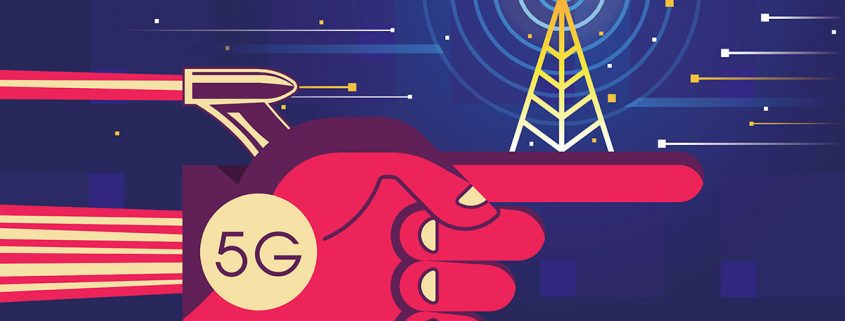5G vs Weather Forecasting
The prospect of a 5G future is arguably here. Some cities have already rolled out the latest generation of wireless and mobile communications technology. Signal speeds will be higher, call quality clearer, and mobile internet access faster than ever. The technology has the potential to shape how we live and communicate, especially in the urban environments where the technology will hit first.
However, it isn’t without hiccups. Aside from the cost and the availability of the upgrades, there is one unexpected area where the urge to upgrade to 5G has encountered resistance. This is in the crucial, life-saving field of weather forecasting. Why you might wonder, does 5G cellular signal have any relation to predicting the weather?
All About Radio Frequencies
Now, how in the world do these two seemingly unrelated things collide? 5G technology is built on the use of 24GHz radio frequencies, boosting the speed of the signals that run through the circuit boards and Scondar components of modern electronics. After a hardware upgrade to better process these signals, the world should be ready to handle speeds that we could only dream about just a decade before.
Signals Clashing
However, this boost in signal comes at a potential cost to weather forecasting. The simplified version is that equipment used to help predict hurricanes and storms relies on radio signals too. Specifically, in the 23.6GHz to the 24GHz range, water vapor emits a faint signal. Detecting these faint signals helps determine whether a storm is brewing or what direction it might be headed, along with other data like how strong it might be once it makes landfall.
As you can imagine, this data is the sort of information that can save lives. Yet, it is also a different frequency range than what 5G tech is going to use, so why the concern? Well, the signal range is the intended range, but it’s never truly adhered to all the time. There is always some spillover into other frequencies, especially if there’s a high demand for the data to transmit. And there will be a very high demand for 5G, given how the world consumes mobile data.
What Can Go Wrong
That spillover of information could disrupt the readings necessary for weather forecasting. Now, in some countries, this isn’t that big of an issue due to much stricter regulations on the spectrum allowed for this “spillover.” However, there is a concern in the United States because the allowed range is much broader. Broad enough that analysts and scientists working for NASA, in weather forecasting, and even the US Navy are concerned about the disruption 5G could cause.
In contrast, the telecommunications industry doesn’t believe this to be the case. They insist that the potential for disruption is minimal at worst, that there is little risk to the accuracy or speed of weather forecasts. The industry at large doesn’t believe that adopting 24GHz would set forecasting back to the state it was in the 1980s, along with cutting warning periods in half or worse.
For the time being, the debate continues to rage and moves on both sides are being played out.
Possible Solutions
Granted, it is not a matter of all or nothing in this situation. It is possible to give everyone 5G access without disrupting forecasting technology. The forecasting can’t be the one to buckle, because meteorology doesn’t work that way. What can move is 5G tech, which could utilize a different frequency in their upgrades. One that doesn’t tamper with any frequencies used in weather forecasting or other crucial areas of research.
Separate Bands
By picking a range that’s separate from the weather bands, the telecommunications industry can have what it wants without disrupting anyone else. This includes the 23.6-24GHz range, but others. The range covering 36 to 37GHz are used to spot rain and snow in the atmosphere over a long distance. For technology meant to detect atmospheric temperature, 50GHz is used. All of these can be avoided while still giving the telecom industry plenty of room to maneuver.
Limiting the Volume
Another possible compromise is to retain the existing chosen frequency but imposes tighter limits. Limiting the volume of transmissions using the frequency could reduce the disruption, though it would also have a detrimental effect on the promised speeds. It is a compromise that the telecommunications industry has so far been reluctant to accept.
Ideally, this issue would be resolved before any further technology is rolled out or the World Radiocommunication Conference begins in October. Different countries have their own decisions on the matter, but US agencies can set the tone and the looser restrictions can affect how things are implemented for everyone else.
Conclusion
For the time being, 5G deployment has been limited. The upgrades to infrastructure haven’t been done yet, and there is still the debate on whether or not it could be disruptive to weather forecasting. A compromise hasn’t been found yet, though one will need to be reached soon if the new tech is to roll out as scheduled.
















